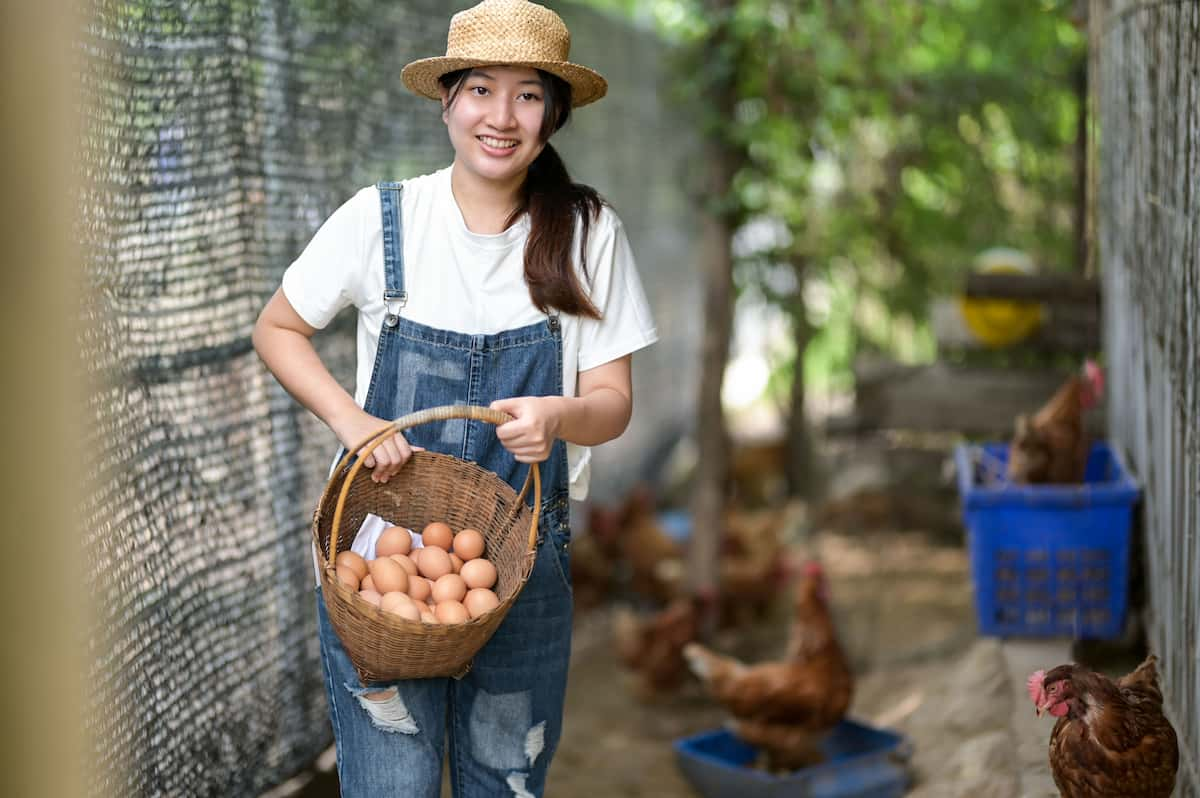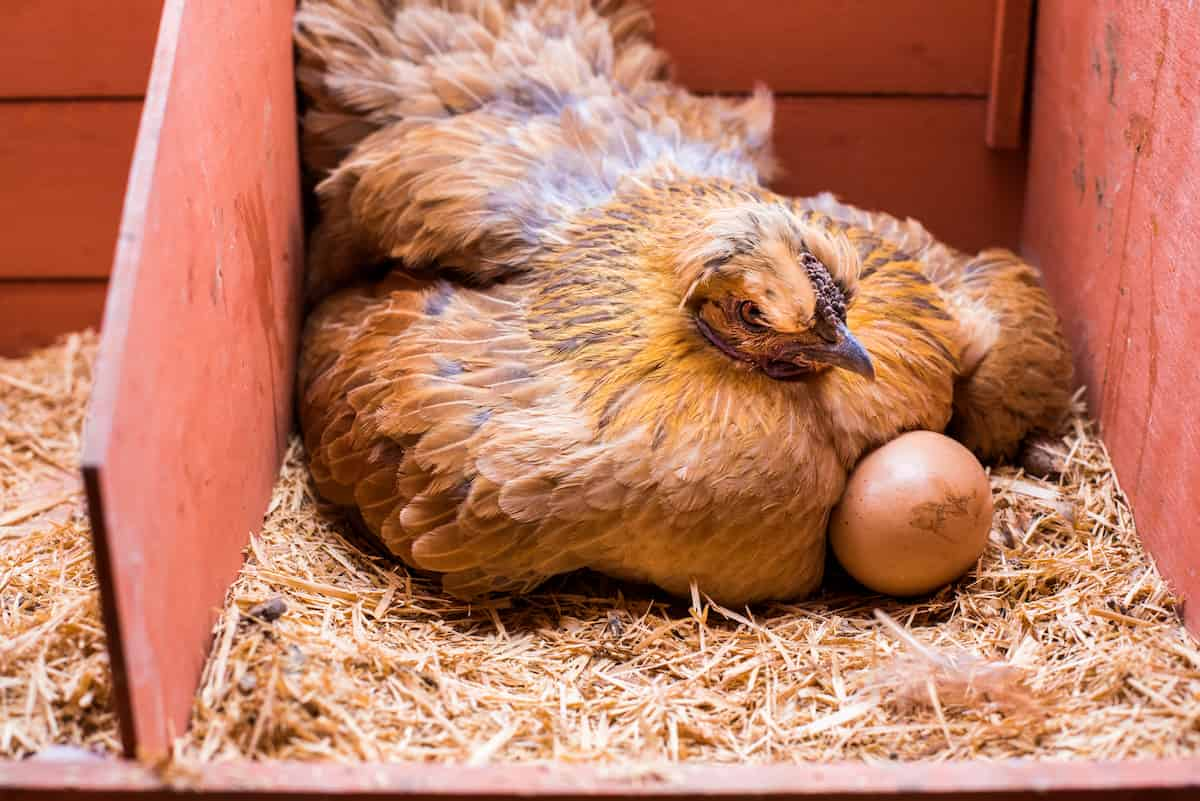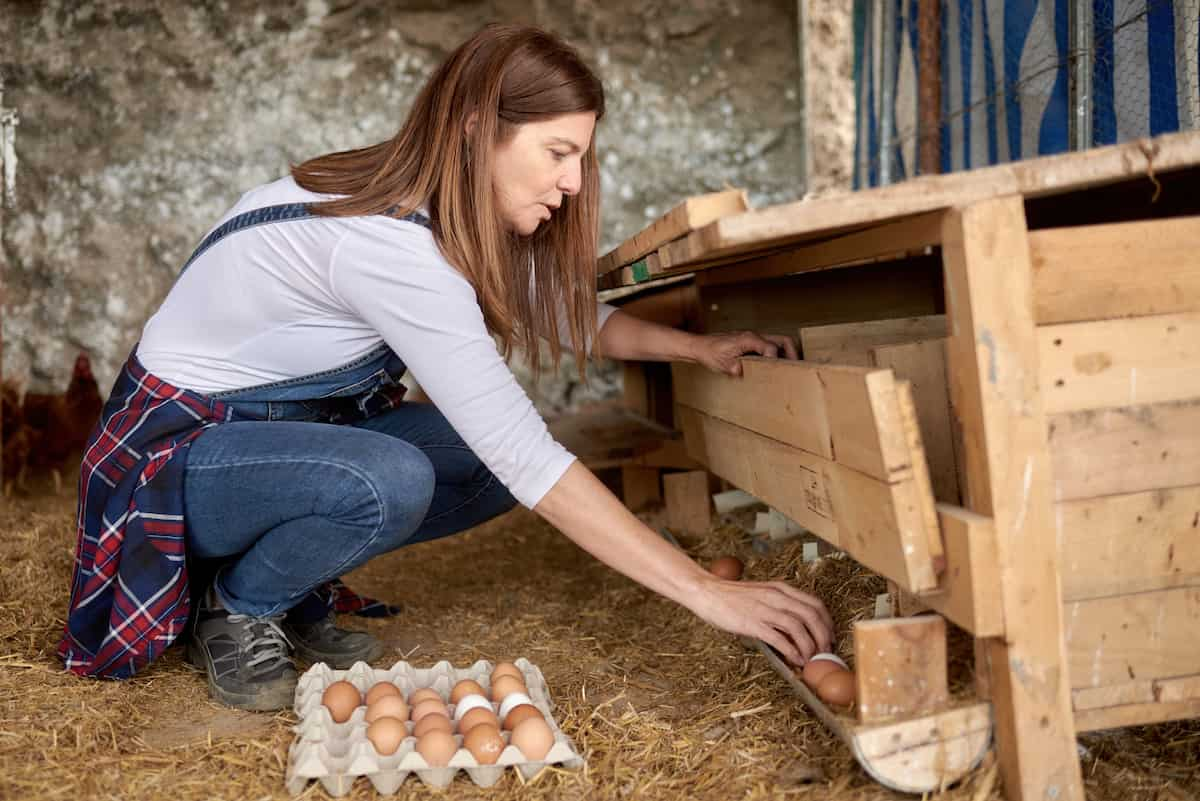Keeping hens laying eggs during the fall and winter can challenge many home gardeners and small-scale farmers. The colder months bring shorter daylight hours and lower temperatures, which can significantly reduce egg-laying. But with the right knowledge and a few simple DIY techniques, you can help your hens continue to produce eggs year-round.

In fact, with proper care and attention, hens can lay just as many eggs during the winter as they do in the summer months. This guide will cover everything you need to know to keep your hens happy and healthy and your egg supply steady, even during the chilliest seasons.
How to Keep Hens Laying Eggs in Fall and Winter
Understanding the Science Behind Egg Production
- Hens lay eggs as part of their natural reproductive cycle. When a hen reaches maturity (usually around 5-6 months), her body begins to produce eggs regularly.
- A complex system of hormones and neural signals controls egg production. These signals are influenced by factors such as daylight hours, temperature, and nutrition.
- Generally, hens need at least 12-14 hours of daylight to lay eggs consistently. As the days get shorter in the fall and winter, hens may stop laying eggs or reduce their production.
- Cold temperatures can also affect egg production. Hens require extra energy to maintain their body temperature in the cold, which can divert resources away from egg production.
- Proper nutrition is critical for egg production. Hens require a balanced diet with protein, vitamins, and minerals to produce healthy eggs.
- Various factors, including age, breed, stress, and illness, can influence egg production. Maintaining a healthy, comfortable environment for your hens is key to keeping them laying eggs year-round.
How to Rear Hens to Lay Eggs in the Winter: 5 Simple Steps
- Use artificial light in their coop: When day lengths approach 15 hours, usually in September, start using artificial lights. Winter lighting must be maintained until natural sunshine reaches 15 hours each day. This will fool hens into laying eggs in winter.
- Use protein-rich food during winter months: Chickens need a healthy diet with plenty of fresh water and food to lay eggs in winter. The best types of feed for egg production include high-energy foods like grains and protein-rich foods such as meat scraps or whole wheat bread crumbs. Avoid anything with a lot of sugar because it can make it harder for hens to produce eggs successfully.
- Chickens need extra stay warm and lay eggs in winter: Chickens are cold-blooded and can’t regulate their body temperature. Keep the chickens warm by insulating the coop. Heat lamps or chicken warmers are great for cold weather.
- Proper bedding for chickens: Chickens sleep roosting, which exposes their underside to the cold air. They don’t have any fur to shield them from the chilly ground. Thus they require assistance with bedding. You can use anything that absorbs moisture from chicken droppings, lowering ammonia levels in your coop. This will prevent the growth of mold, which may be harmful to both hens and humans that come into contact with it!
- Free-range for hens during daylight hours in winter: Free-range chickens roam freely on pasture land and live happier lives because they can get plenty of exercise, fresh air, and sunshine. Free-ranging your chickens during daylight hours in winter so they can be exposed to the sun will ensure that you don’t need to keep the artificial light on for as long, which can save on electricity costs.
In case you missed it: Ultimate Guide to New Hampshire Red Chicken Breed: Characteristics, Feed, and Care

Creating a Comfortable Environment for Your Hens
- Provide adequate space: Hens need enough space to move around and stretch their wings. They require at least 1.5-2 square feet of space per bird in the coop and 8-10 square feet per bird in the outdoor run.
- Maintain proper temperature: Hens are most comfortable in temperatures between 45-85°F. Keep the coop well-ventilated to prevent heat build-up, and use fans or misters to cool them down in hot weather.
- Provide clean water and feed: Hens require fresh water and feed to produce eggs. Change the water daily and provide enough food for them throughout the day.
- Provide nesting boxes: Hens need a quiet, dark, and private space to lay their eggs. Provide at least one nesting box per 4-5 hens, and fill it with clean nesting material such as straw or shavings.
- Keep the coop clean: A clean coop helps prevent disease and keeps your hens healthy. Clean the coop regularly, removing any soiled bedding or debris.
3 Reasons Winter Chickens Stop Laying Eggs
- Not enough light – one of the main reasons why hens stop laying eggs during winter is the shorter daylight hours. Hens need between 12-16 hours of the morning to keep laying, but the exact amount varies depending on age and breed. (Source: The Spruce)
- The tail end of the fall molt – chickens stop laying during the fall molt since growing new feathers requires lots of energy, and decreased light further disrupts their reproductive system. This usually leads to a hen’s reproductive system halt, which may not resume until spring. (Source: Backyard Poultry)
- Temperatures are too cold in the coop – during winter, forming and creating an egg takes a lot of energy, and cold stress can affect the hen’s ability to lay eggs. (Source: Countryside Daily)
10 DIY Tips for Encouraging Egg Production in Winter
- Warmth is not the same as light. Insulate the coop, keep it draft-free, and allow the chickens to huddle together for warmth. Deep bedding material can also help with insulation.
- Composting bedding can keep the coop warm. Allow deep bedding material to compost over the winter and naturally warm the coop.
- Providing supplemental light. Most hen breeds need 12 to 14 hours of daylight to produce eggs. Use a 40w lightbulb, secure it well, and adjust the timer to match the changing hours of the day.
- Supplement your flock’s diet with corn. Feeding hens cracked corn before bedtime helps give them something substantial to digest at night and keeps them warmer.
- Happy chickens lay eggs. Hang veggies from the ceiling or buy chicken treat feeders to reduce boredom.
- Consider expanding the coop area. Add a sunroom or covered area for the hens to enjoy winter sunny days.
- Keep an eye out for frostbite. Protect legs, combs, and wattles with petroleum jelly if temperatures are dropping below the teens.
- Provide extra room for outside feeding and wandering. Pile hay, brush, or an old Christmas tree on the snow around the coop to give chickens non-snow-covered areas to explore, scratch, and peck.
- Make sure nesting boxes are adequate and have clean and dry bedding. Keep at least one package for every four chickens, and keep the nesting boxes clean and well-bedded.
- Adequate food and water are essential. Offer clean water all winter and increase the amount of food and protein to store body fat and produce eggs.
In case you missed it: Ultimate Guide to Jersey Giant Chicken Breed: Characteristics, Feed, and Care

Conclusion
Keeping hens laying eggs in fall and winter requires attention to their feed, living conditions, and environment. Hens can continue to lay eggs even in colder months with proper insulation, supplemental lighting, a varied diet, and adequate space.
- Feed Your Flock for Less: Top 10 Tips to Save on Chicken Feed
- Ultimate Guide to Ossabaw Island Hog: Breeding, Raising, Diet, and Care
- Hatching Answers: The Top 10 Reasons Your Chickens Aren’t Laying Eggs
- Eggs and Economics: Breaking Down the Cost of Raising Backyard Chickens
- Defend Your Greens: Proven Methods to Keep Iguanas Out of Your Garden
- Ultimate Guide to Cinnamon Queen Chicken: A Comprehensive Guide for Beginners
- Ultimate Guide to California Tan Chicken: Breeding, Raising, Diet, Egg-Production and Care
- Ultimate Guide to Marsh Daisy Chicken: Breeding, Raising, Diet, and Care
- 10 Types of Chicken Farming Businesses You Can Start for Profits